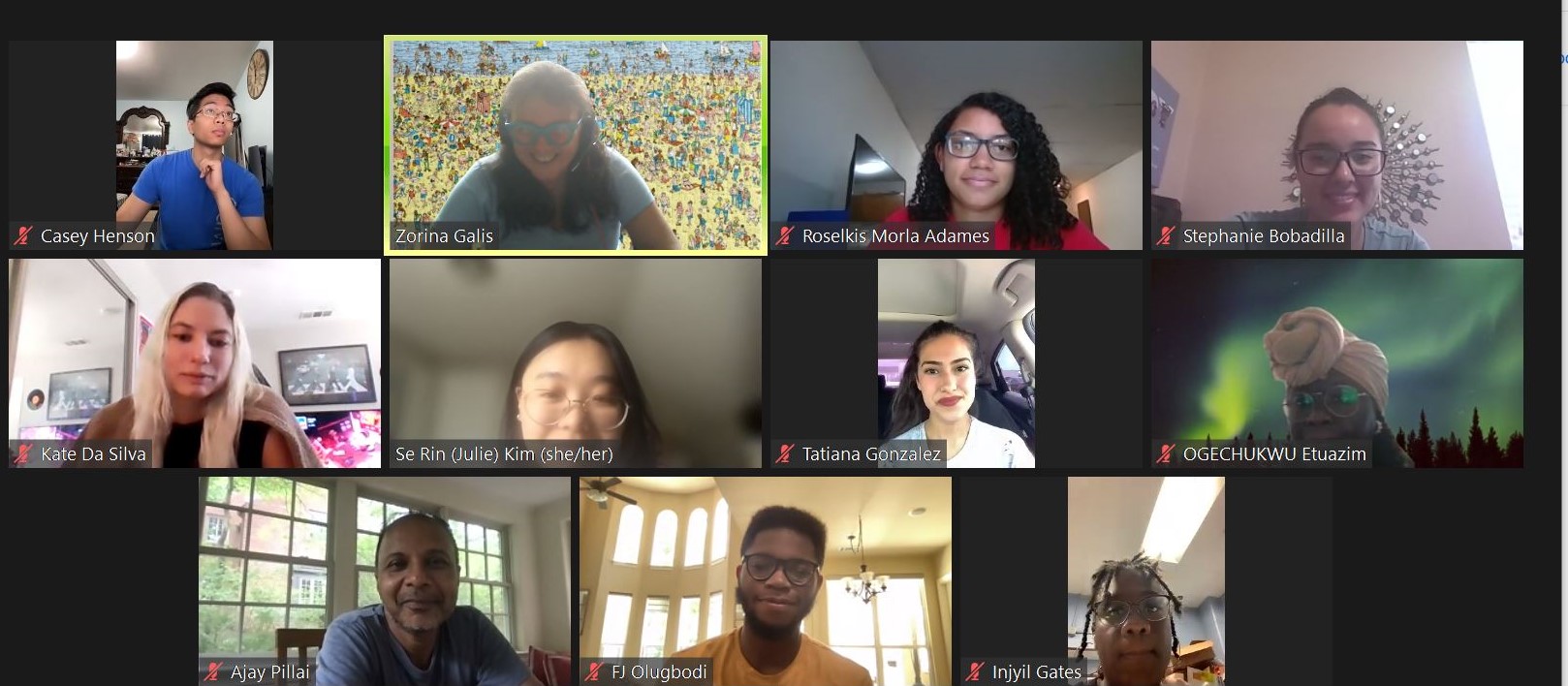
In Summer 2021, the Human BioMolecular Atlas Program launched its first Undergraduate Student Internship Program for undergraduate students to work with HuBMAP researchers for the summer to learn cutting-edge single-cell technologies, 3D model making, and software building. Eight students were chosen by researchers at three institutions –Harvard University, Stanford University, and University of Pennsylvania
Harvard University—
HuBMAP Researcher: Nils Gehlenborg, PhD
Roselkis Morla Adames created a webpage for the HuBMAP portal which allows users to visualize data about the HuBMAP tissue donors, such as sex, race, age, ethnicity, and other factors.
Stanford University—
HuBMAP Researcher: Garry Nolan, PhD
Injyil Gates used CODEX imaging, a technique that fluorescently stains proteins in each cell, on samples from 8 sites in the small bowel and colon.
University of Pennsylvania—
HuBMAP Researcher: Brian Gregory, PhD
Stephanie Bobadilla-Regalado used single-cell RNA sequencing to study immunoglobulin gene expression in tissue samples from a patient undergoing female-to-male sex reassignment. There were five upregulated immunoglobulin genes in these samples, possibly in response to the high-testosterone hormone treatments of the procedure and could represent a possible shift to “male” expression.
Tatiana Gonzalez studied the effect of hormone therapy on gene expression at the single cell level in cervical tissues. She found three genes (MIR31HG, MUC16, and RHEX) which had increased expression levels during hormone therapy. These genes are involved in cell growth and might be involved in cancer progression.
HuBMAP Researcher: Junhyong Kim, PhD
Oluwafolajinmi Olugbodi devised ways to retrieve biologically relevant metadata from HuBMAP’s data collections more easily. Using this framework, researchers will be able to input metadata with minimal additional effort.
HuBMAP Researcher: Kate O'Neill, MD, MTR
Ogechukwu Etuazim used RNA-sequencing to study the differences in gene expression between successful versus ectopic implantations of embryos.
Casey Henson worked with the Penn Image Computer and Science Lab to learn how to use the ParaView visualization tool with open-source ITK-SNAP software to create animated sectioning of uterine MRI images.
Kate da Silva worked with the Penn Image Computer and Science Lab to learn how to use 3D printing techniques to create a mold of a human ovary out of plastic acrylonitrile butadiene styrene, providing the model with strength not usually seen in more standard models.
If you would like to see more about the work of these talented students, please watch their presentations on the HuBMAP YouTube Channel or read about them on the HuBMAP Consortium website HuBMAP Consortium website.
HuBMAP Undergraduate Student Internship Program was funded by 1OT2OD026675-01.


